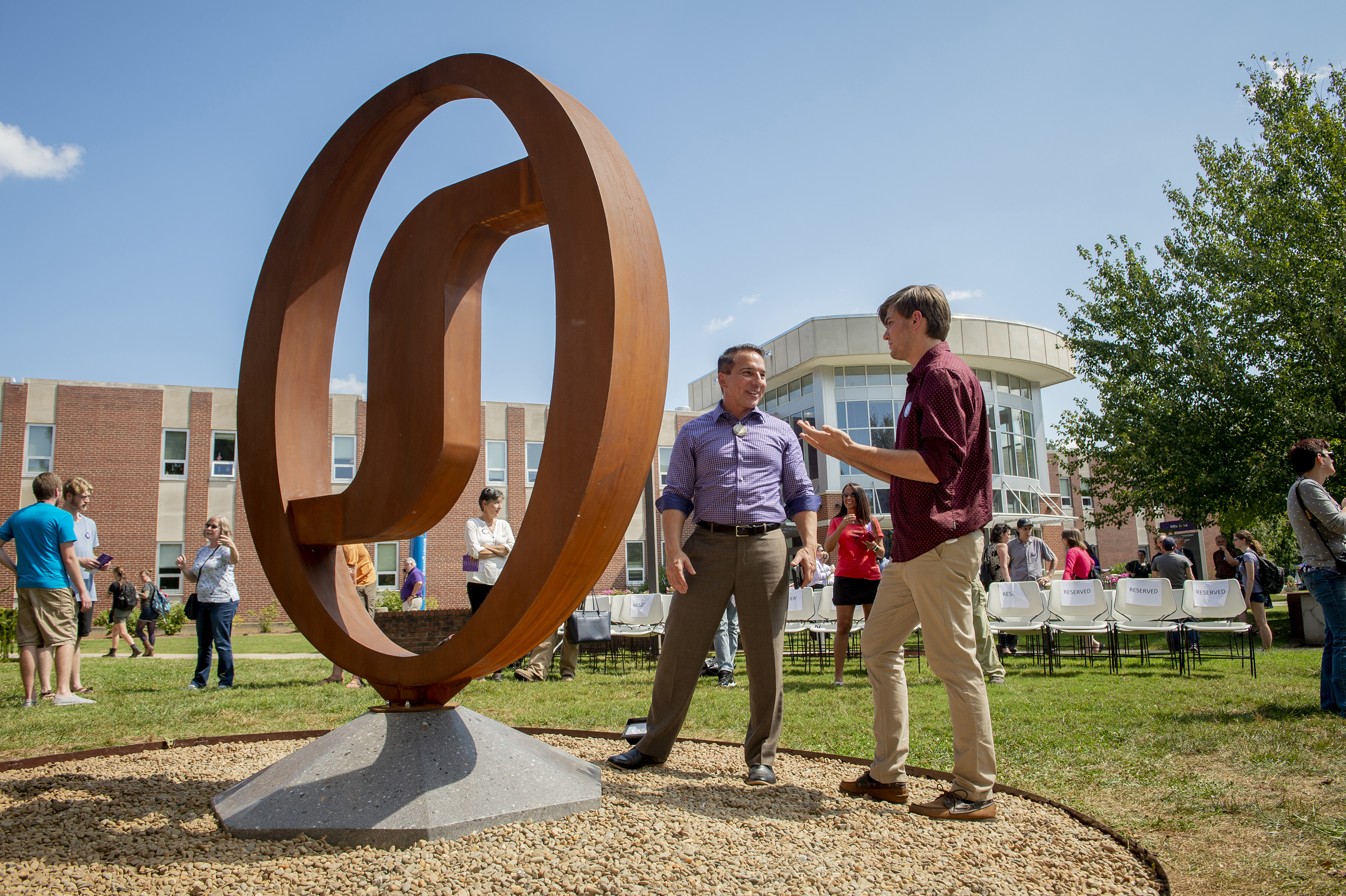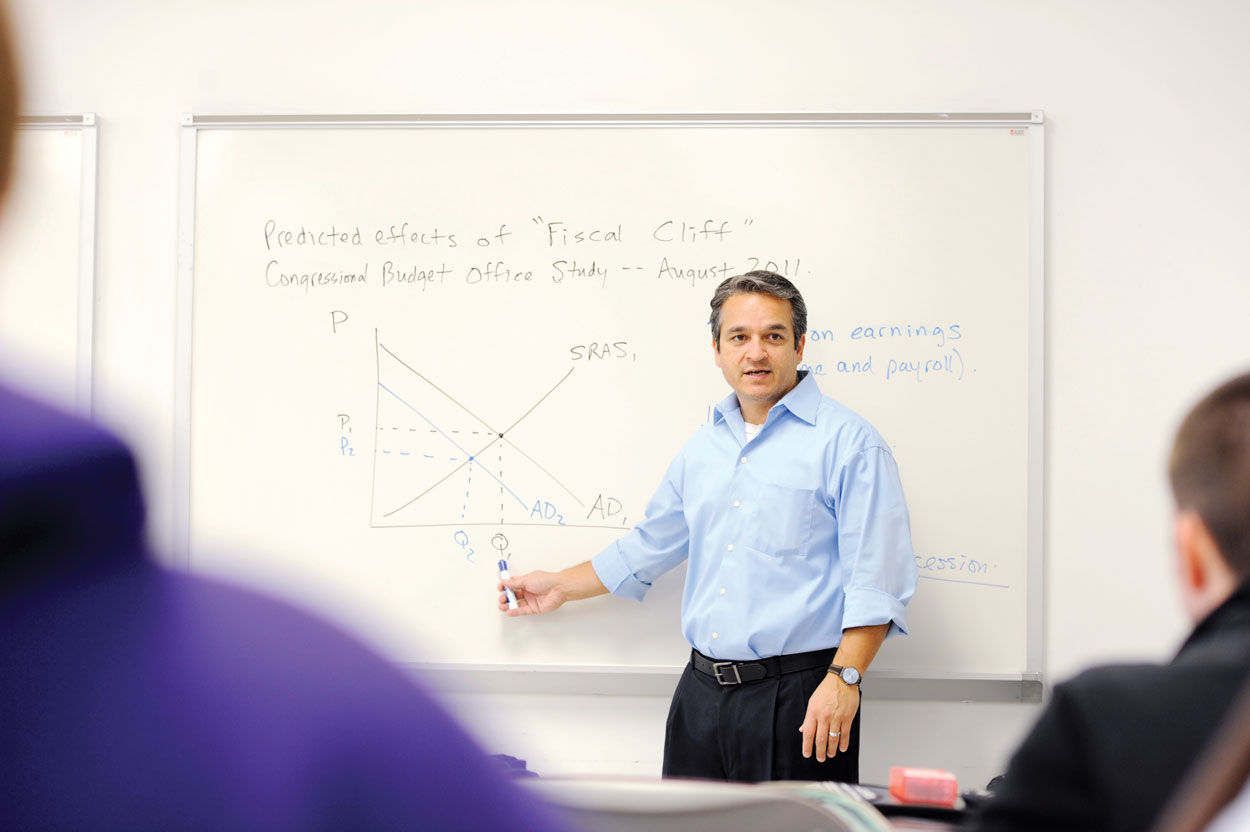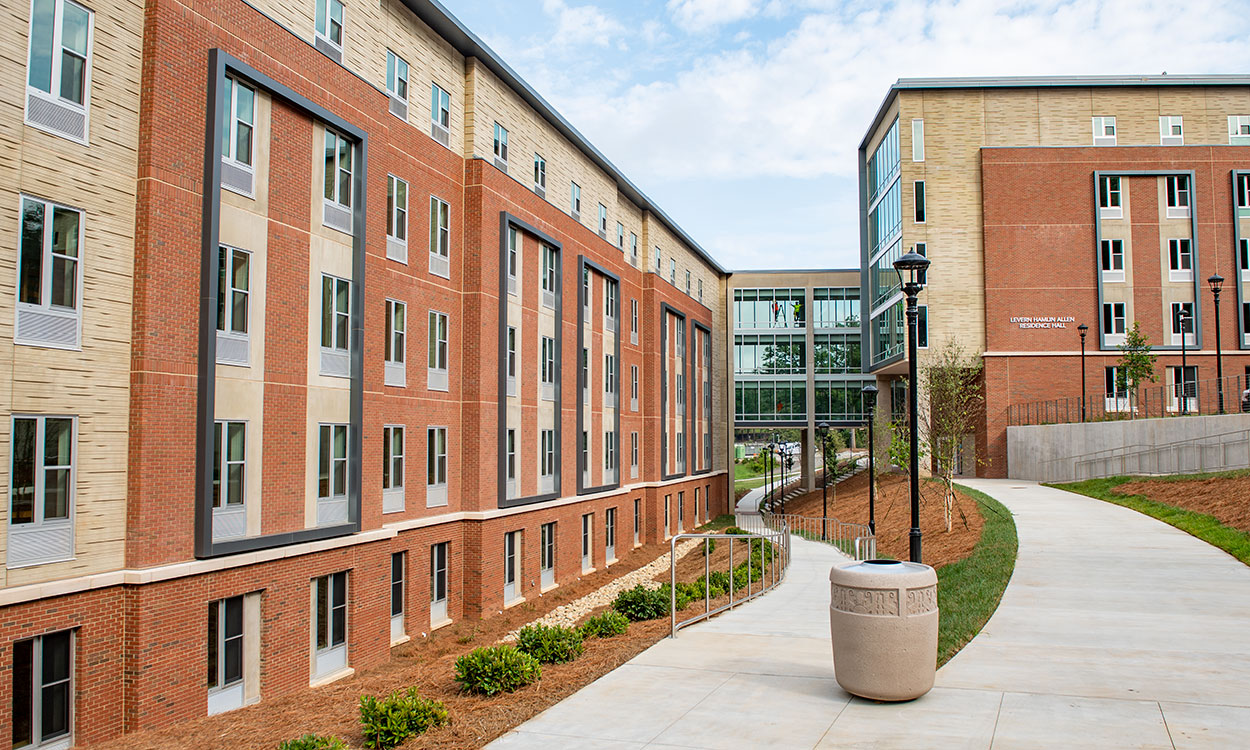Eastern Band of Cherokee's ties to WCU landscape commemorated with unveiling of 'wi' sculpture

Todd Martin (right), a WCU fine arts student who produced the new “wi” sculpture on campus, discusses the work's creation with Richard Sneed, principal chief of the Eastern Band of Cherokee Indians.
The Eastern Band of Cherokee Indians’ historical and cultural connections with the land now home to Western Carolina University were commemorated Friday (Sept. 21) as representatives of the tribal and university communities gathered for the unveiling of a sculpture based on the Cherokee syllabary character “wi.”
The ceremony at the sculpture installation site in the courtyard adjacent to WCU’s Killian Building included remarks from Carol Burton, WCU acting provost, and Richard Sneed, principal chief of the Eastern Band. Brett Riggs, the university’s Sequoyah Distinguished Professor of Cherokee Studies, spoke about the history of the site, and the official unveiling was conducted by Todd Martin, a student in WCU’s fine arts program who created the sculpture in response to the university’s 2017-18 learning theme: “Cherokee: Community. Culture. Connections.”
An opening prayer was given in the Cherokee language and in English by Tom Belt, coordinator of WCU’s program in Cherokee language. Burton began the remarks by reminding those attending that “the heritage and tradition of a proud people permeates the very ground on which our university is built.”
“It is essential that Western Carolina University explore and enhance our relationship with the Eastern Band of Cherokee Indians and continue to educate our students, faculty, staff and community about the Cherokee people and culture and the significance of this beautiful place we call home,” Burton said.
The Cherokee syllabary character “wi” denotes a geographic location, and the installation site was once the center of a Cherokee village.
“Traditional histories mark this as the first Cherokee town in the Tuckaseigee River valley,” Riggs told the gathering. Archaeological excavations have revealed “traces of that ancient town that are buried beneath our feet, so it’s still here,” he said. “It’s still here. It hasn’t left. This spot – this ‘wi’ – remains very much part of the Cherokee world.”
Sneed said the sculpture will stand in the courtyard for generations to come and serve as a reminder to those who pass by that “this land was Cherokee land first and will always be Cherokee land, but it is our honor to share this land with Western Carolina University so that education of future generations can take place.”
“For thousands of years, our people dwelled on these lands where this campus is today,” Sneed said. “And for many centuries after European contact, there was a concerted effort to extinguish and even wipe out the memory of native nations across this country. I’m humbled and honored that Western Carolina University has seen fit over the last year, and in previous years, to take a completely different stand, and that is to enhance the relationship with the tribe, to enhance the recognition of Cherokee culture and tradition in these very lands where the campus is.”
Martin, the sculpture creator, is a native of Jackson County and the son of Lisa Bloom, a WCU faculty member who chaired the committee overseeing the “Cherokee” learning theme and who serves as the university’s Robinson Distinguished Professor of Educational Technologies. Martin, who is now completing his final semester in WCU’s fine arts program, said he approached the committee about a year ago to seek funding for an artwork based on the theme.
Martin obtained financial support for the project through several campus units, but he said the encouragement he received during the process of creating the sculpture also was extremely valuable – particularly the moral support from students and faculty in WCU’s Cherokee Studies Program and David Orr Belcher College of Fine and Performing Arts.
“I think it’s extremely important to keep investing in these student projects. I think we should fill the entire campus with engagement and students’ works,” Martin said.
“When I leave Western, I get to say, ‘Look at what I’ve created.’ And all of you students get to say, ‘Look at what we created. Look at what’s possible.’ That comes from the community and the help that everyone provided, so I think everyone should congratulate themselves,” he said.

